All products featured are independently chosen by us. However, SoundGuys may receive a commission on orders placed through its retail links. See our ethics statement.
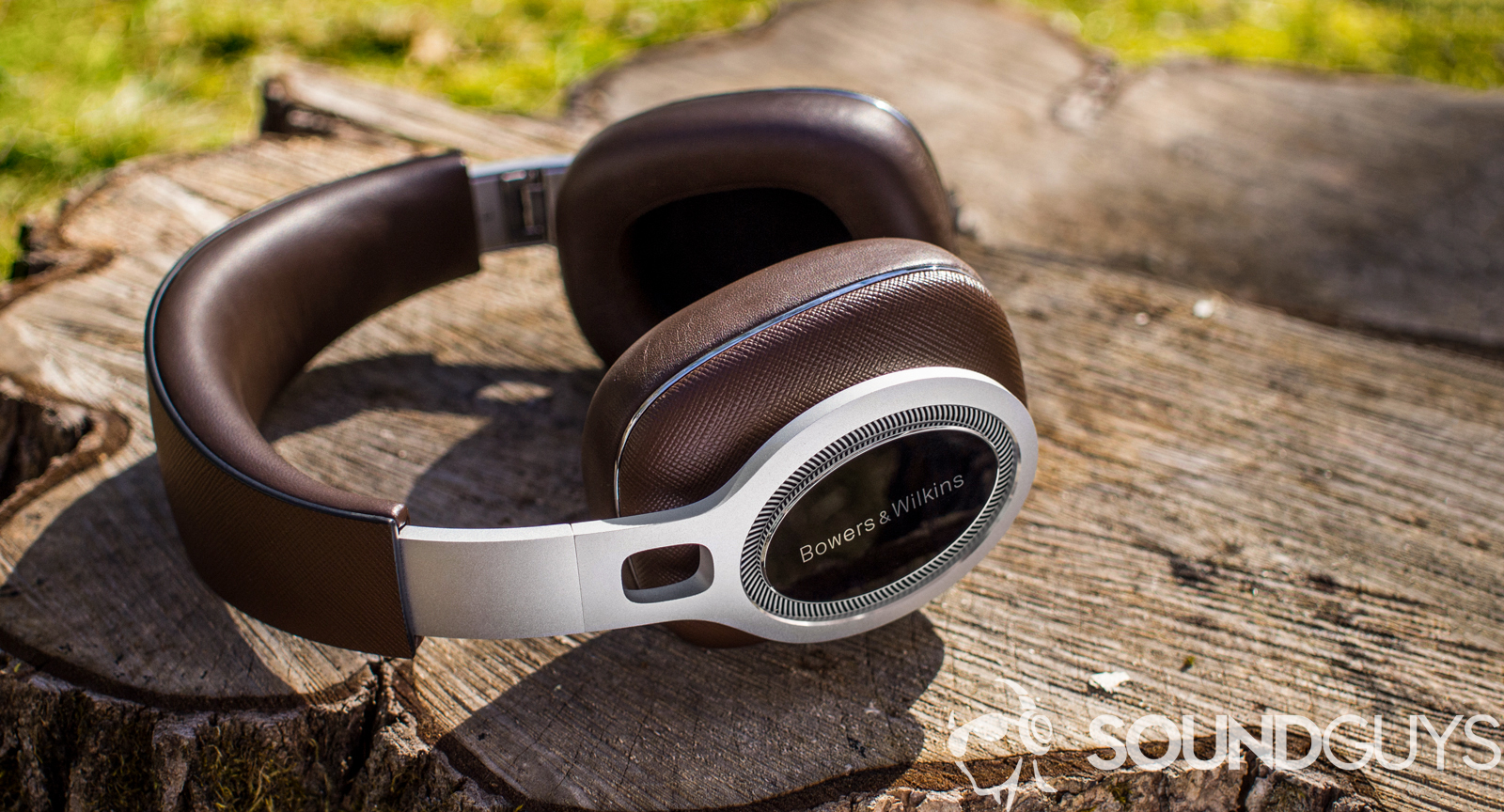
Bowers and Wilkins P9 Signature review
April 14, 2017
UPDATE [March 2022]: This product has been retired. Bowers and Wilkins has since launched the PX series. For the latest features, however, we recommend one of these Bluetooth headphones.
Flagship headphones are always a big deal, and inimitable English audio company Bowers & Wilkins has a hit in their P9 Signature headphones. Built for an audience with cash to burn, it’s very apparent that a lot of design love went into creating them.
However, I wouldn’t recommend these headphones to just anybody: there are definitely a few quirks that won’t be all that attractive for the first-time buyer, and spending $900 on a pair of headphones can be a little scary for many.
If you’re looking for a set of headphones to sate your gear lust, you may want to shop around a bit to suit your needs perfectly before putting these in your cart. But if you’re looking for a luxury item to break into the high-end audio game and lose yourself in your music: the P9 Signature is an excellent gateway drug into luxury audio products.
What’s in the box
Cracking open the case to the P9 Signature, you’ll find your headphones, an Alcantara carrying case, a 4-foot cable, a 4-foot cable with 3-button remote, and an extra-long cable for home listening.
Build and design
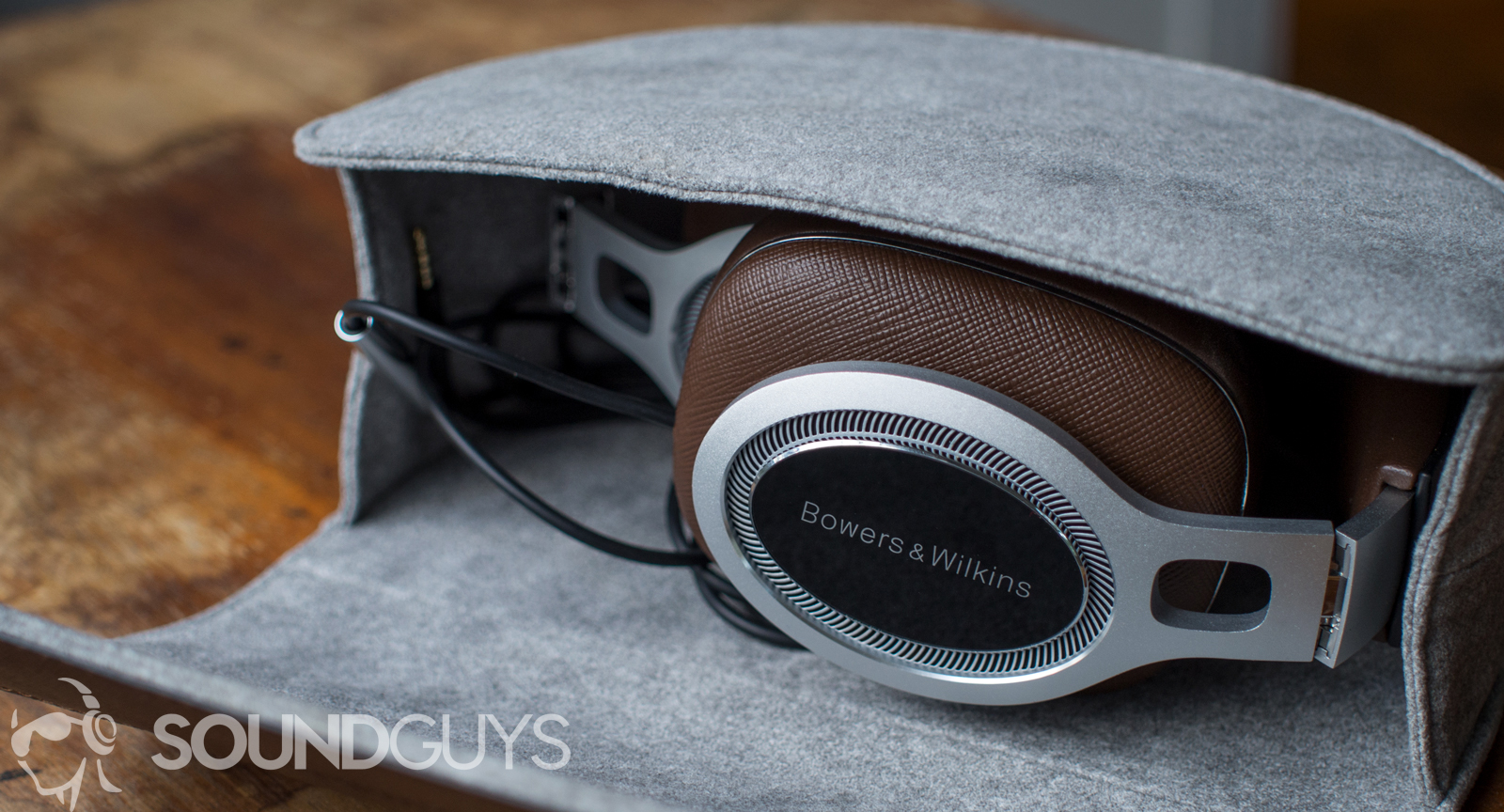
The Bowers & Wilkins P9 Signature is a special set of headphones, but the long and short of it is: they’re the cream of the crop when it comes to the Bowers & Wilkins line. Not only are they the most expensive option in the B&W stable, but they bear all of the most labored-over design elements.
Built around an aluminum frame and clad in Italian Saffiano leather, the P9 Signature does its best to emulate what most would expect of a European sports car—minus the engine, anyway. There’s very little in this set of headphones that was given less than B&W’s full attention, from the drivers angled 15° to meet your ears head-on, to the removable/swappable cables. You may or may not like how the brown stamped leather looks, but it’s pretty comfortable once it’s on your head.
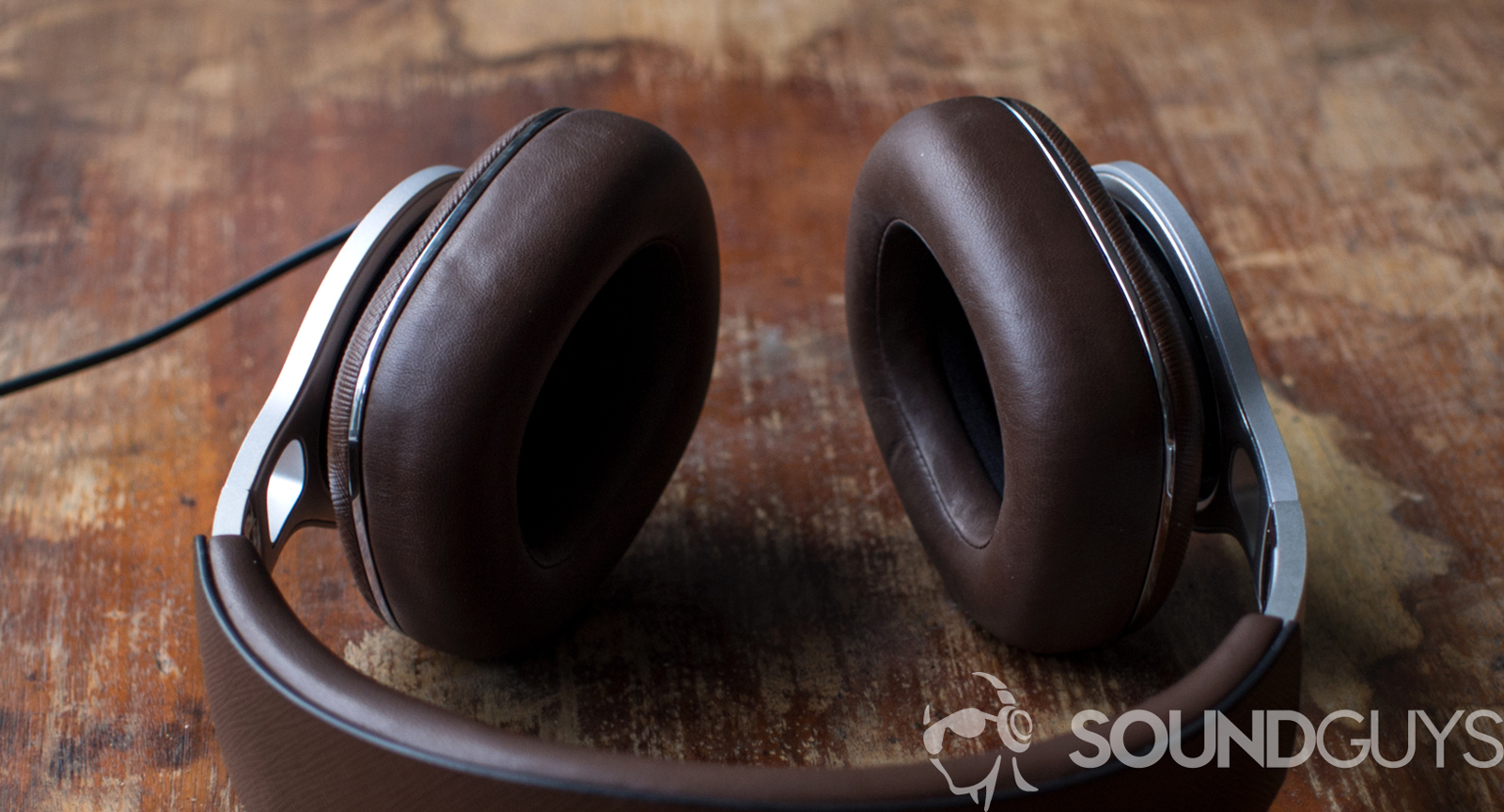
Like the rest of the B&W line, the P9 Signature has a closed back, but without some of the more common problems associated with it. They also diffuse heat a little better than the rest of the pack. Trust me, you’ll be thankful for that after a couple hours of listening: the next step down—the Bowers & Wilkins P7—gets positively toasty after a short while. However, isolation is poor, and you’re liable to annoy coworkers if you work in an open floorplan office. It’s a tradeoff to be sure, but at-home listeners won’t have to worry about this too much.
I will point out that the P9 Signature is quite heavy—it’s made from thickly-cut metal, after all. Wearing the band too lose can be quite uncomfortable, and even a perfect fit can wear on you after a while. If you wear glasses, these may not be the headphones for you, as I had a lot of trouble getting my frames to play nice with the pads.
Connection
I will say that I appreciate a set of high-end headphones that manage to wrangle a low impedance for good use with modern audio players (read: smartphones). With the B&W P9 Signature you never have to worry about whether or not you’re getting the most out of your headphones without some expensive piece of equipment. You are.
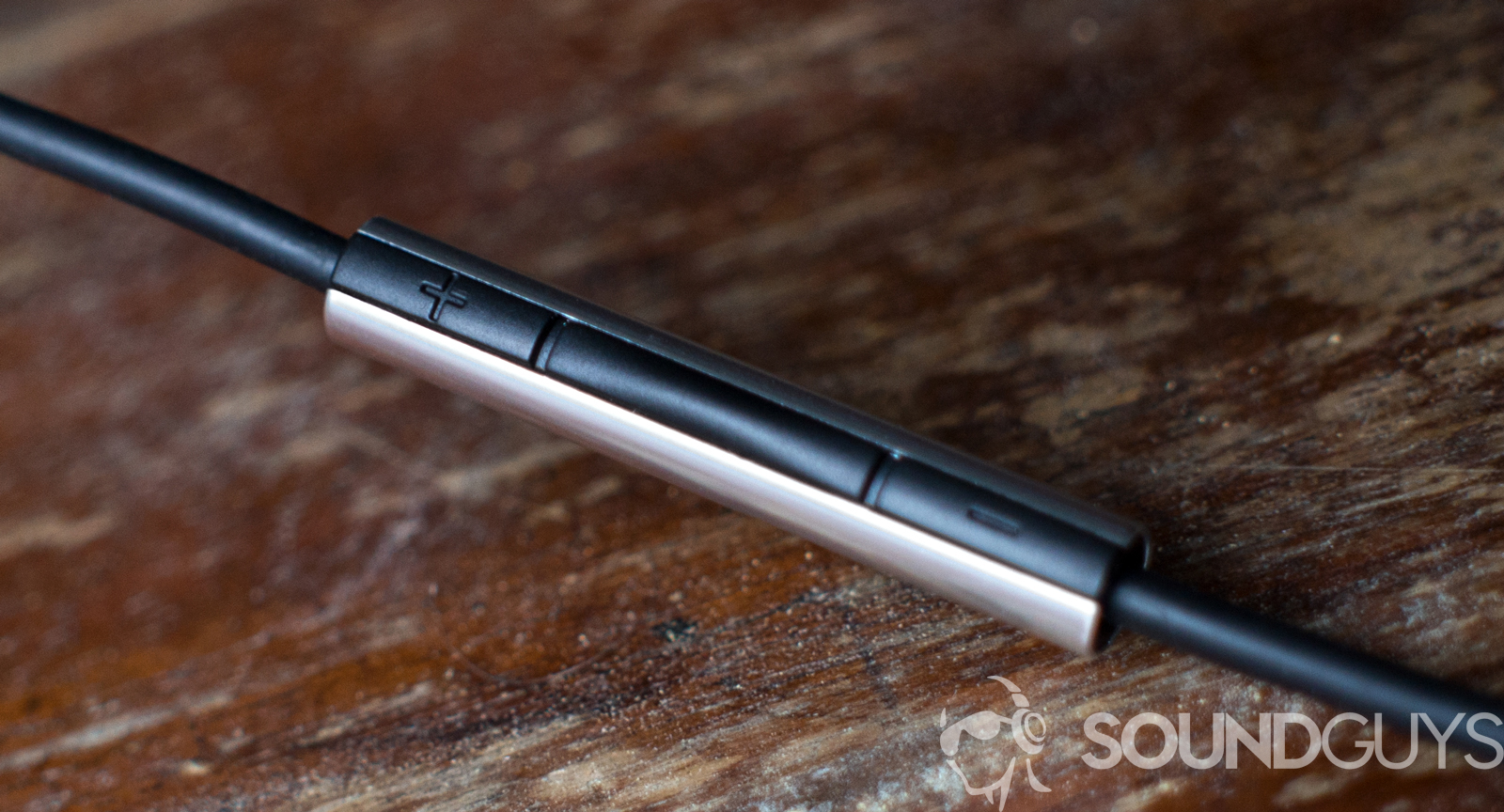
If you’re going to be using these headphones with a smartphone, all three cables terminate in your standard 3.5mm plug, with a 2.5mm end that plugs into the earcup. The remote on one of the cables is fairly basic—only using three buttons to control things like volume and call controls—but it gets the job done.
How the P9 Signature sounds
Bowers & Wilkins’ efforts to fine-tune their drivers really shows when you plug these cans in and start listening. Because the P9 Signature doesn’t require a lot of power to use, you should be able to get really good results from even just your smartphone. If you have an iPhone 7, there’s a plan to offer a Lightning cable sometime in the summer of 2017.
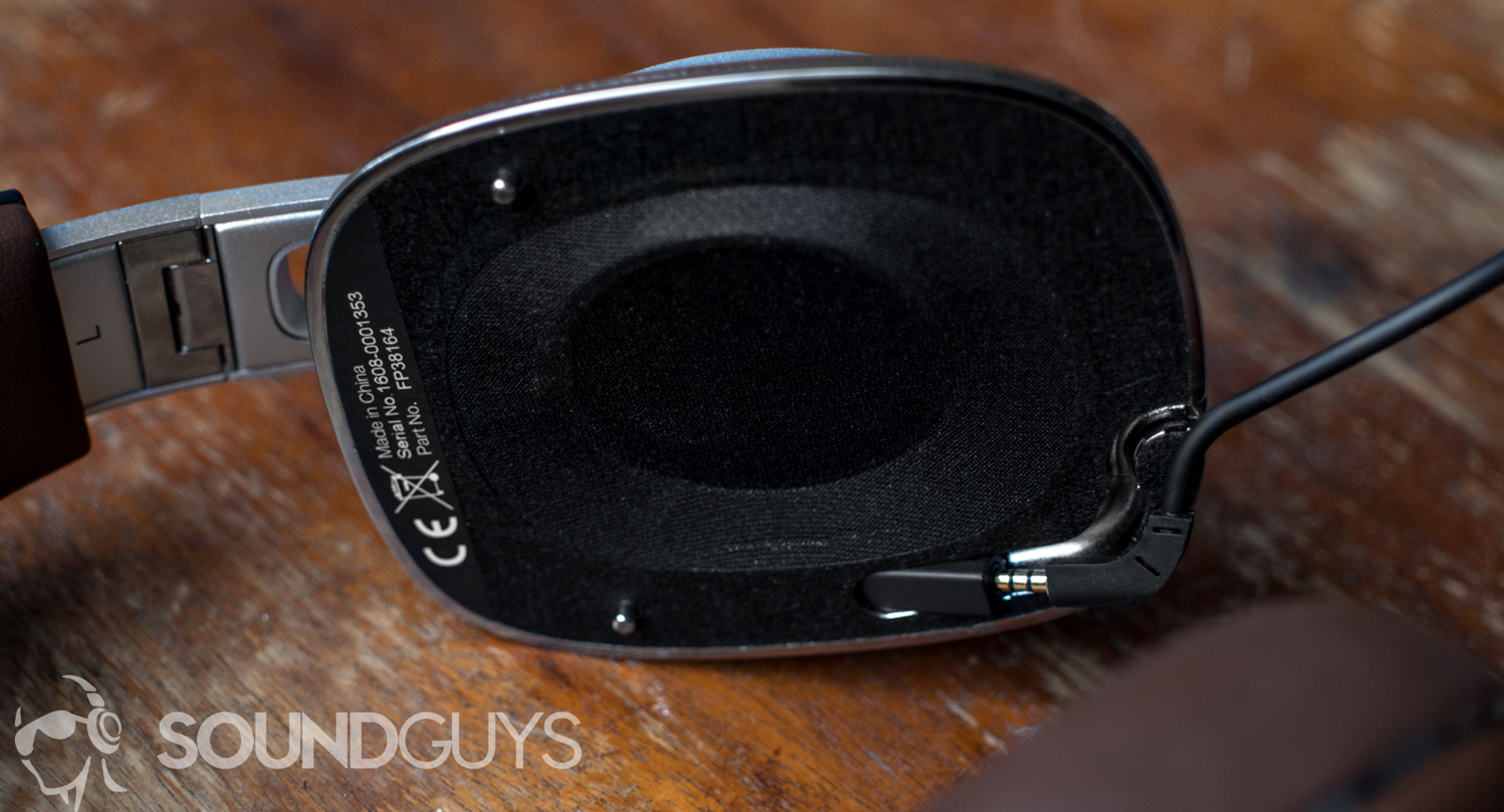
Bowers & Wilkins obviously put a lot of time into managing vibration reduction, and it shows in bass notes. Closed-back cans can sometimes create tiny echoes or build up pressure against the driver, making it tough for them to reproduce notes with low frequencies, which is why many audiophiles prefer an unsealed back. You may not notice it at first, but if you’re listening to higher-quality files, you’ll be able to pick out right away that they sound more detailed, fooling your senses just a little easier. It’s fun to get lost in a song, and the P9 Signature is the type of headphone to do it.
But that only happens in the absence of outside noise. Because these headphones don’t isolate all that well, audio quality will suffer noticeably in the presence of outside noise (much more so than it does with other headphones). It’s just something to be aware of, but these are best used where there isn’t a ton of rumbling sounds like at home or in your corner office. Pro tip: adjust the headphones to be just a little looser than you think is necessary so the earpads don’t compress much. The sound is much better that way.
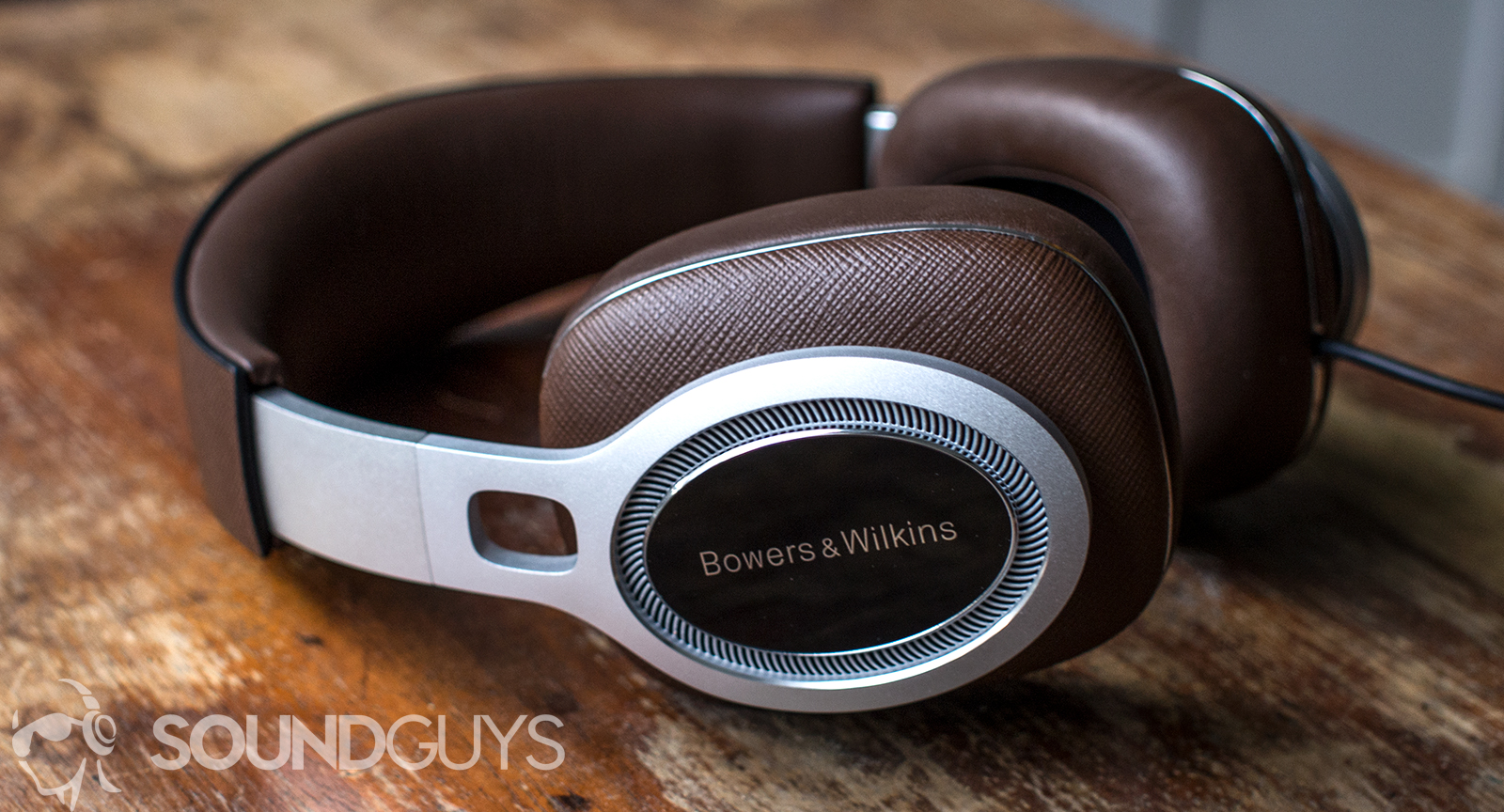
Lows
There are two main differences between the P9 Signature and the P7: the lows and the highs. The ubiquitous “boomy” sound—or extended echo of many low-frequency notes that happens when you seal the back of a driver’s chamber—is very nicely minimized. What this means is that low frequency notes will sound much more like they’re supposed to, and don’t linger on for longer than they did in their recordings. Instruments are easier to identify, and they sound much more realistic than they would on, say, a pair of Beats headphones.
I will say that bass is very heavily emphasized over other notes, so low octaves and kick drums tend to take over some of the focus in music, especially in hip-hop mixes like LL Cool J’s Mama said knock you out. The background drum track just dominates the whole song, making it a bit tough to hear the rest of it.
Mids
The response of the Bowers & Wilkins P9 Signature is a bit dynamic, and like most every other headphone company on Earth: B&W bumped some of the frequencies in the vocal ranges and first harmonics. This means that singers will sound just a little bit louder over indie and other vocal-heavy mixes (while other notes are downplayed a bit). That’s really okay, as it can cover up mixing errors to draw focus to what most people want to gravitate to anyway. It definitely makes well-done mixes like the Fugees’ Killing Me Softly sound absolutely bewitching with the preservation of the vocal echo, though.
Highs
In comparison to their other headphones, Bowers & Wilkins did seem to rein in their emphasis on highs a tiny bit. That’s fine though, as the traditional consumer sound can be really grating to younger ears (read: anyone under 40) with its enormous bump to sounds in the 9-11kHz range. Ever get surprised or turned off by a hi-hat or super high-pitched sound in a recording? You know what I’m talking about. That doesn’t happen as much with the P9 Signature.
Conclusion
Bowers & Wilkins has another winner on their hands, and why wouldn’t they? The P9 Signature is a very well-engineered set of headphones that performs well on smartphones and home setups alike. While the form of the headphones may not fit everyone’s aesthetic tastes, the sound is a very safe bet for anyone coming from a pair of Beats or non-studio cans.
These are not the best solution for commuters, as sound leakage and poor isolation can mar your experience a bit. However, the P9 Signature doesn’t require an expensive setup to perform well: just your smartphone is enough to milk the most out of them. These are also not studio cans, nor are they ideal for critical listeners: they’re designed to be fun for the (wealthy) masses, and artfully play with note emphasis to add their own flavor to your music.
But are these worth $900? To an Italian leather aficionado or audiophile: sure, absolutely. But for someone who could make do with a P7 Wireless, or V-Moda Crossfade 2? Probably not. It’s undeniable that these headphones have impressive-as-hell audio quality, but it’s at a level that won’t be noticed against its closest competitors if you’re only streaming music or primarily listening on your daily commute. If you’re looking for headphones that only live at home, there are a lot of ~$400-500 options that will satisfy your needs quite well—so keep your options open.